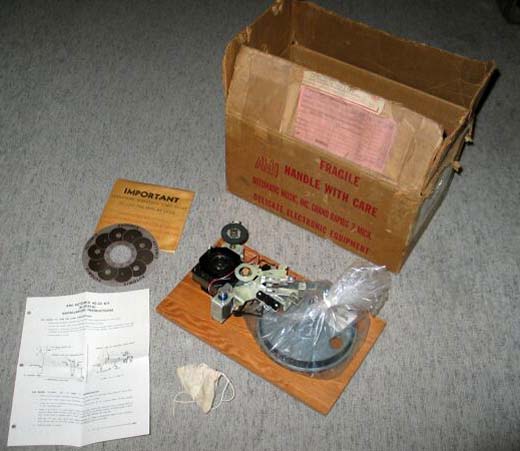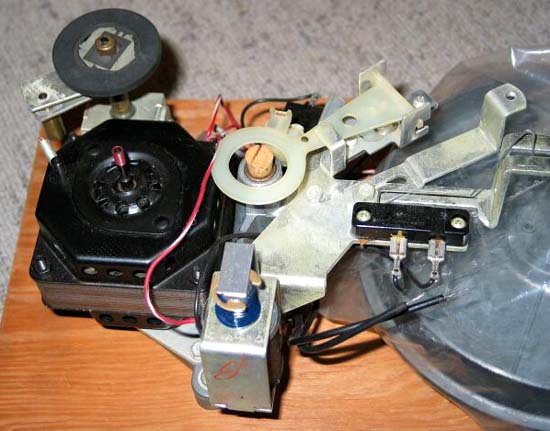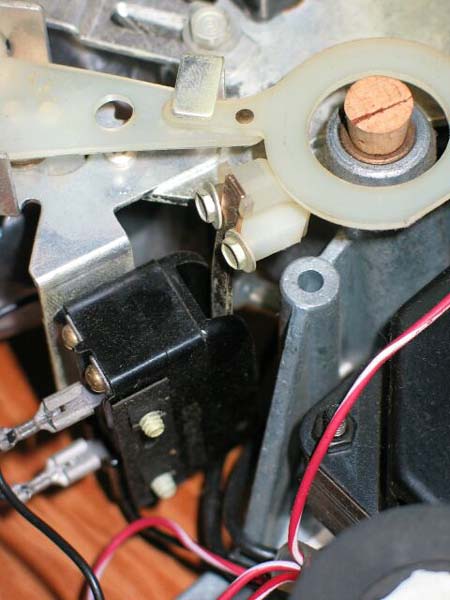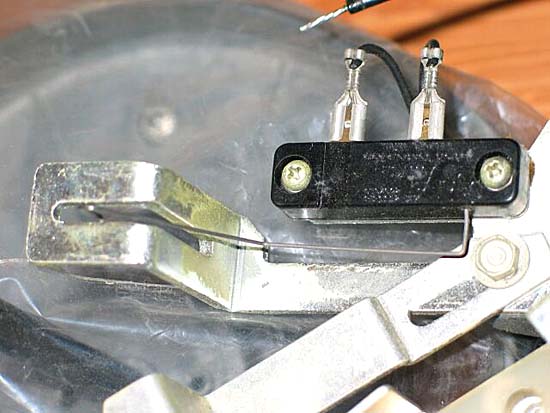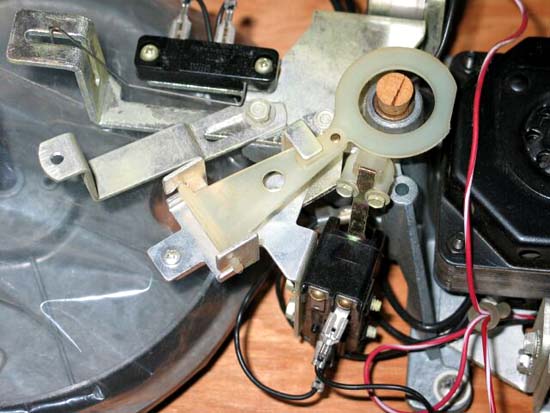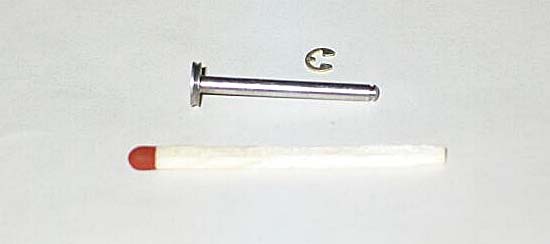|
Beschreibung und
Bilder: Axel Rosenberger
Die Conti 2 war
standardmäßig mit einer 33/45 - Umschaltung ausgerüstet.
Für die Conti 1 und ältere Modelle (bis hinunter zur AMI G200) gab es
einen Nachrüstsatz, der den kompletten Plattentisch im Tausch ersetzte.
Eine Funktionsbeschreibung dieser 33/45 - Umschaltung findet man im Manual
zur Conti 2 - ca. 4 Seiten mit Bildern und Erklärungen.
Dieser Beschreibung nach gab es eine "frühe" Version dieser Umschaltmimik
und eine spätere.
Der Unterschied liegt aber nur in der Verwendung von zweierlei
Mikroschaltern, die für die Ansteuerung des Hubmagneten (bewegt das
Gummizwischenrad) verantwortlich sind.
Kurz zusammen gefasst, funktioniert die Umschaltung ungefähr so (aus dem
Gedächtnis):
Im beweglichen "Puck" des Plattentellers steht eine Art von kleiner
"Antennenspitze" heraus (fehlt fast immer; war original durch einen
kleinen "C"-Ring gegen Herausfallen gesichert).
Wird eine EP-Platte mit kleinem Mittelloch und 33 1/min gewählt und
aufgelegt, drückt die Platte diese Antennenspitze nieder (eine Platte
mit großem Mittelloch fällt ja über den ganzen Puck).
Diese "Antennenspitze" betätigt unter dem Plattentellers eine Art von
"ringförmigem Löffel" (fehlt auch häufig), dessen "Löffelstil" oben
erwähnten Mikroschalter betätigt.
Dieser läßt den Hubmagneten anziehen und befördert damit die
Gummiandruckrolle des Plattenantriebes an eine höhere (dünnere) Stelle
der Plattenmotorachse und läßt den Puck nach unten rutschen.
Der Plattenteller dreht ab jetzt mit 33 1/min.
Beim Wegräumen der Platte wird alles wieder rückgesetzt und der
Plattenteller dreht wieder auf 45 1/min.
Ähnliche Einrichtungen gab es auch von anderen Herstellern:
-
eine rein mechanische
Lösung bei Rock-Ola ab dem Modell Regis (1488/1495) als bestellbare
Option bei der Auslieferung
-
eine elektronische Lösung bei
Seeburg (per Frequenzwandler wurde der Plattentellermotor auf eine
andere Drehzahl gebracht)
Abbildungen des Nachrüstsatzes:
|
|
The Conti 2 was equipped
with a 33/45 changeover as standard.
For the Conti 1 and older models (downwards to AMI G200) there was a
retrofit kit which replaced the complete turntable assembly in
exchange.
A functional description of
this 33/45 switchover can be found in the Conti 2 manual - approx. 4
pages with pictures and explanations.
According to this description, there was an "early" version of this
switching mimic and a later one.
However, the difference lies only in the use of two different
microswitches, which are responsible for controlling the lifting
magnet (moves the rubber idler wheel).
To summarise briefly, the
switchover works something like this (from my memory):
In the movable center puck of the turntable, a kind of small "antenna
tip" sticks out (almost always missing; was originally secured
against falling out by a small "C"-type ring).
If an EP record with a small centre hole and 33 rpm is selected and
placed on the turntable, the record presses this antenna tip down (a
record with a large centre hole falls over the entire center puck).
This "antenna tip" actuates a kind of "ring-shaped spoon" (which is
often missing) below the turntable, whose "spoon style" actuates the
microswitch mentioned above.
This attracts the lifting magnet and thus moves the rubber pressure
roller of the turntable drive to a higher (thinner) position on the
turntable platter motor shaft and allows the puck to slide downwards.
The platter now rotates at 33 rpm.
When the record is removed, everything is reset and the turntable
turns back to 45 rpm.
Similar devices were also
available from other manufacturers:
-
A purely mechanical
solution at Rock-Ola from the model Regis onwards (1488/1495) as
an option that could be ordered on delivery
-
An electronic solution
at Seeburg (the turntable motor was set to a different speed
using a frequency converter)
Pictures of the retrofit
kit: |

